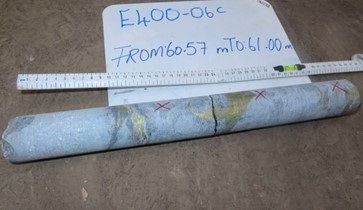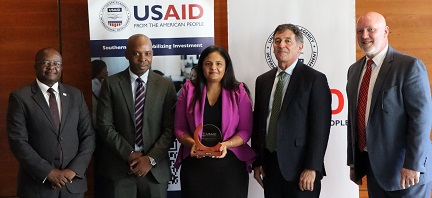
Development financing for Omburu Sun
The Development Bank of Namibia announced late this week it has provided finance for a 4.5 megaWatt solar power generator, Omburu Sun Energy, near Omaruru.
Omburu Sun Energy, owned by InnoSun Energy, a locally registered company, was established after InnoSun signed a power purchase agreement with NamPower in December 2013. Work on the solar facility has already begun.
Once completed Omburu Sun Energy is expected to generate 4.5 MW electricity for NamPower. This electricity will reduce NamPower’s reliance on coal power, hydro power and electricity imported from South Africa.
Development Bank CEO, Martin Inkumbi said the bank’s appraisal of the project showed that InnoSun has the necessary skills to bring the project to fruition, as well as experience with renewable energy projects in a number of African countries.
He said that the forecast revenue and the terms of the power purchase agreement with NamPower gave confidence that Omburu Sun would be sustainable over the long-term.
Inkumbi noted that in addition to being the first large-scale solar electricity generation project in Namibia, the project opens the doors for power generation by the private sector.
He said that, although large-scale power generation was previously the domain of the public sector, the successful trial of the project will create a receptive environment for more companies to generate power from renewable resources such as solar.
Inkumbi said that although solar power could not entirely address the needs of on-demand electricity, use of various sources of renewable energy could substantially reduce Namibia’s requirement for fossil fuels.
This, he said, would have an incremental impact as confidence in renewable sources grows and more facilities are added.
He said that additional local capacity is vital for social development as the overwhelming majority of Namibia’s population does not have access to electricity yet, and that as they become connected to the power grid, the demand for electricity and the requirement for imported electricity will grow.
Citing Paulus Shilamba, CEO of NamPower, Inkumbi said that Namibia has a shortfall of electricity, and the shortfall is expected to approach 650 MW stating that the three main local facilities generate only 39% own electricity. In 2015, he said, the cost of imported electricity is forecast to amount to N$2,4 billion but that this could rise to N$10 billion in 4 years.
Local generation of energy for relatively low amounts will offset the outflow of capital from Namibia, Inkumbi said.
He said the SADC power pool is in dire need of cost-effective development and improvement, and that local generation will protect Namibia against exploding energy costs and act as a buffer against fluctuations in supply from across the border.










































